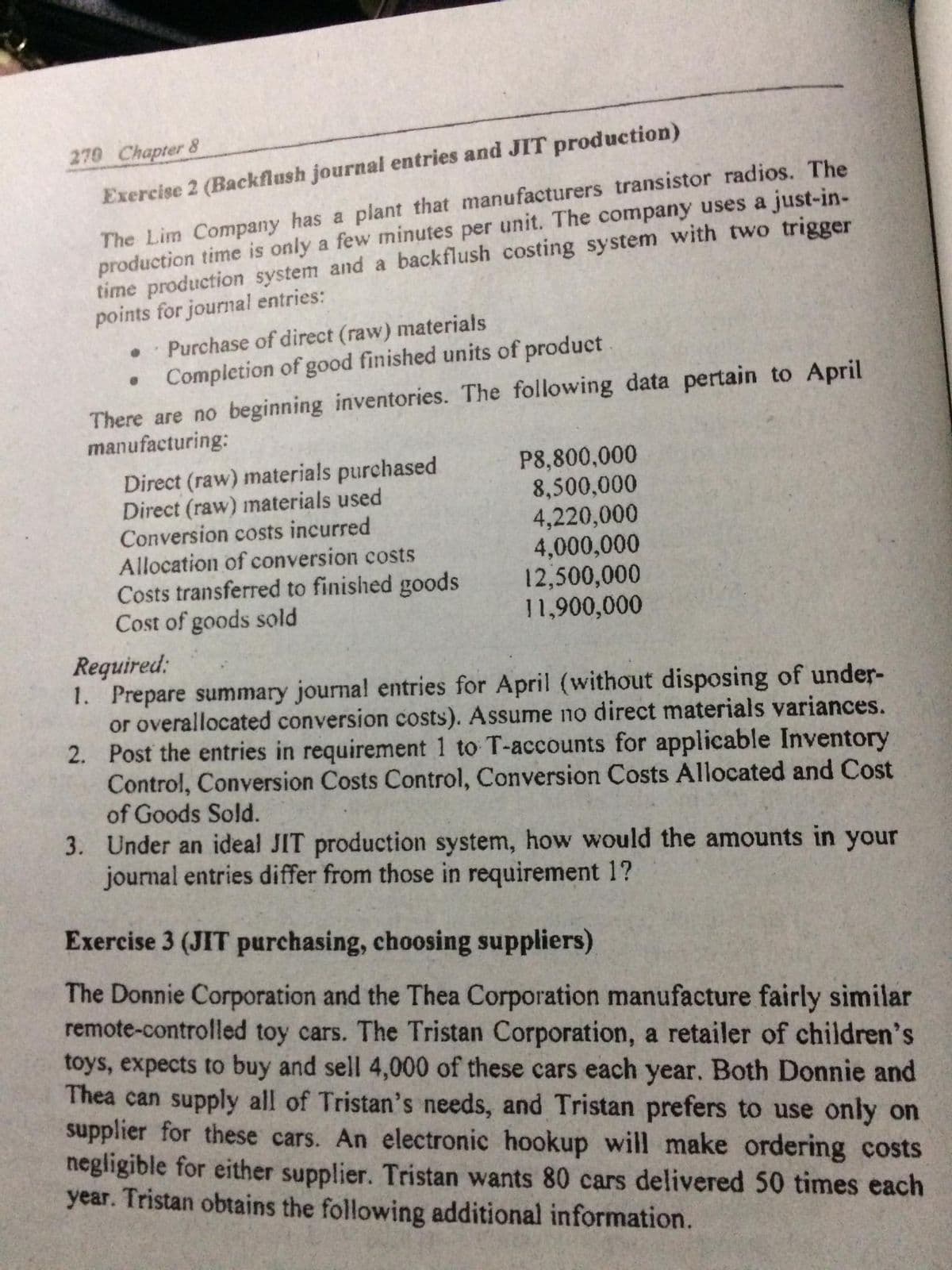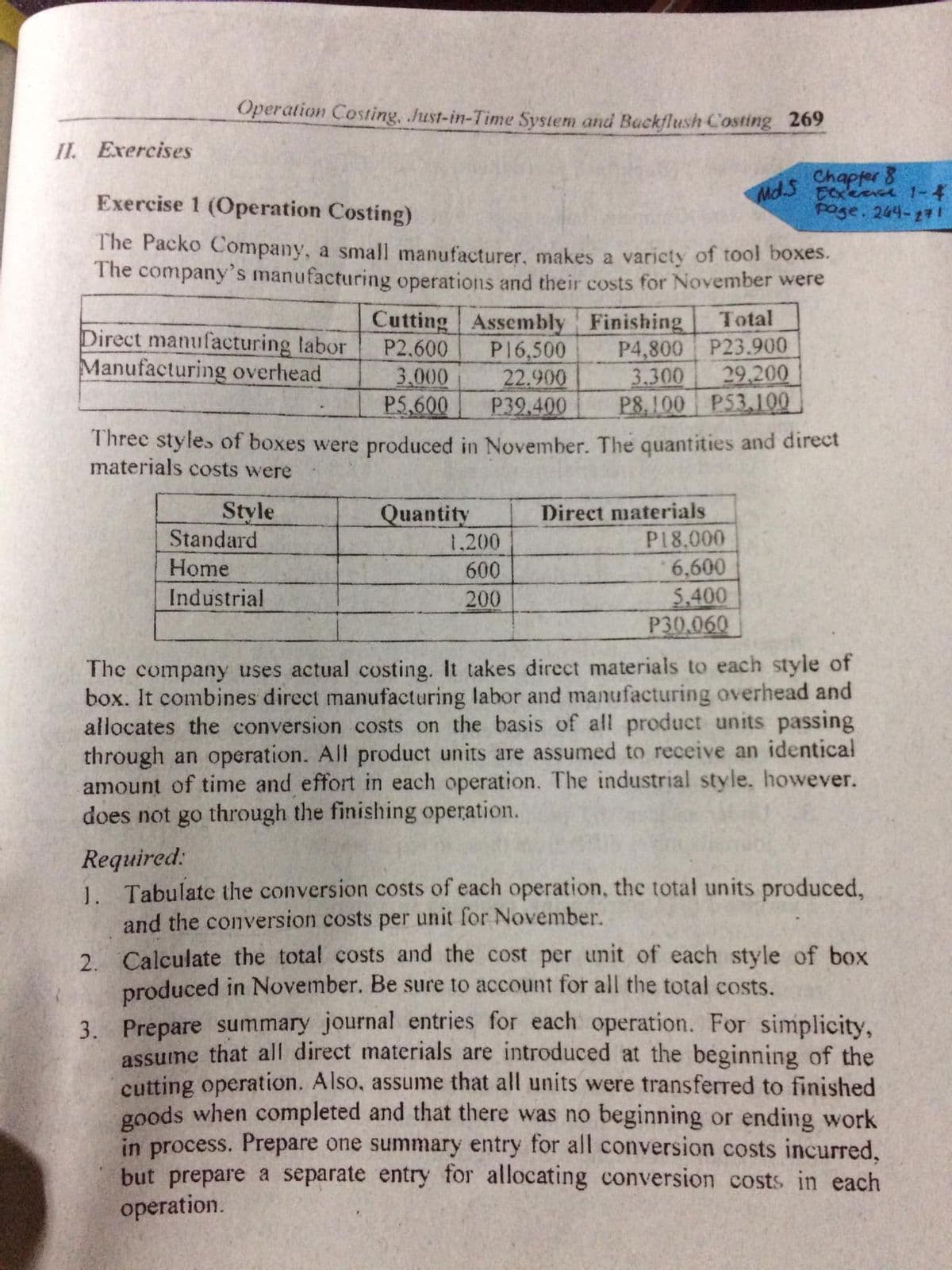The Packo Company, a small manufacturer, makes a varicty of tool boxes. The company's manufacturing operations and their costs for November were Cutting Assembly Finishing P16,500 22.900 P39,400 Three styles of boxes were produced in November. The quantities and direct Total Direct manufacturing labor Manufacturing overhead P2.600 3.000 P5,600 P4,800 P23.900 3.300 29.200 P8,100 P53,100 materials costs were Style Standard Home Quantity 1.200 600 Direct materials P18,000 6,600 5.400 P30.060 Industrial 200 The company uses actual costing. It takes direct materials to each style of box. It combines direct manufacturing labor and manufacturing overhead and allocates the conversion costs on the basis of all product units passing through an operation. All product units are assumed to receive an identical amount of time and effort in each operation. The industrial style, however. does not go through the finishing operation. Required: 1. Tabulate the conversion costs of each operation, the total units produced, and the conversion costs per unit for November. 2. Calculate the total costs and the cost per unit of each style of box produced in November. Be sure to account for all the total costs. 3. Prepare summary journal entries for each operation. For simplicity, assume that all direct materials are introduced at the beginning of the cutting operation. Also, assume that all units were transferred to finished goods when completed and that there was no beginning or ending work in process. Prepare one summary entry for all conversion costs incurred, but prepare a separate entry for allocating conversion costs in each operation.
Process Costing
Process costing is a sort of operation costing which is employed to determine the value of a product at each process or stage of producing process, applicable where goods produced from a series of continuous operations or procedure.
Job Costing
Job costing is adhesive costs of each and every job involved in the production processes. It is an accounting measure. It is a method which determines the cost of specific jobs, which are performed according to the consumer’s specifications. Job costing is possible only in businesses where the production is done as per the customer’s requirement. For example, some customers order to manufacture furniture as per their needs.
ABC Costing
Cost Accounting is a form of managerial accounting that helps the company in assessing the total variable cost so as to compute the cost of production. Cost accounting is generally used by the management so as to ensure better decision-making. In comparison to financial accounting, cost accounting has to follow a set standard ad can be used flexibly by the management as per their needs. The types of Cost Accounting include – Lean Accounting, Standard Costing, Marginal Costing and Activity Based Costing.
the packo company, a small manufacturer makes a variety of toolboxes. The company manufacturing operation and its cost. calculate the total costs per unit of each style of box


Trending now
This is a popular solution!
Step by step
Solved in 2 steps with 2 images









